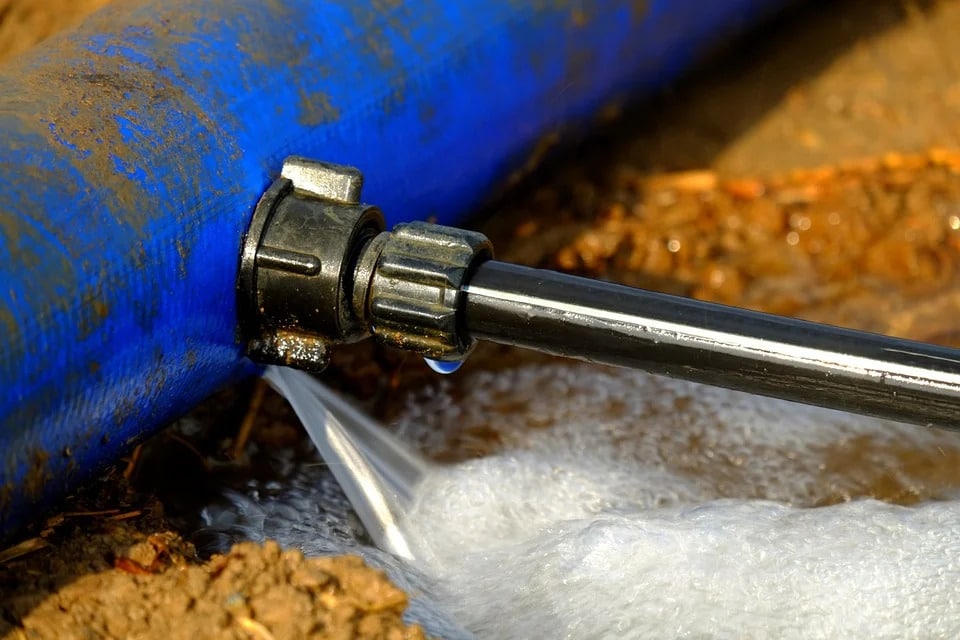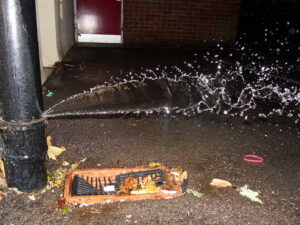How to Spot and Swiftly Fix a Burst Pipe Issue
How to Spot and Swiftly Fix a Burst Pipe Issue
Blog Article
The article author is making a few great observations relating to How to install a dishwasher safely in general in this content beneath.

A burst pipeline is a major emergency; you can just stand as you view water you pay a lot to reunite with the planet. In worse cases, you see a pool on your kitchen floor, which is a great trip threat, particularly if you have youngsters around. If the pipeline that burst remained in your walls, problem: you may need to paint that entire area.
Exactly how can a calamity like a ruptured pipeline be stopped as well as taken care of? Well, by listening to your specialist emergency plumbings and also following these regulations.
How do I know when my pipelines have ruptured?
Fluctuating water pressures
Pipelines do not simply burst in a day. You may have discovered that your cooking area faucet or shower doesn't run promptly when you transform the faucet. It may stop briefly for a couple of seconds and after that blast you with even more pressure than usual.
In other instances, the water may appear regular at first, then drop in pressure after a few secs.
Damp wall surfaces and water stains
Before a pipe ruptureds, it will leakage, the majority of times. If this persistent leaking goes unnoticed, the leak may graduate into a large tear in your pipeline. One very easy way to avoid this emergency is to look out for wet walls ad water spots. These water stains will lead you right to the leak.
Puddles under pipes and sinks
When a pipe bursts, the outflow develops a pool. It might appear that the pool is growing in size, as well as despite the amount of times you mop the puddle, in a few minutes, there's one more one waiting to be cleansed. Commonly, you might not be able to trace the puddle to any type of visible pipelines. This is an indicator to call a specialist plumber.
Untraceable trickling sounds
Pipeline ruptureds can happen in the most unpleasant places, like within concrete, inside walls, or under sinks. When your home goes silent, you may be able to hear an annoyingly persistent dripping noise. Even after you've checked your shower head and kitchen tap, the dripping might proceed.
Beloved viewers, the trickling might be originating from a pipeline inside your wall surfaces. There isn't much you can do regarding that, except tell an expert plumber.
Shut off the Water
When water freezes, it increases in quantity by concerning 9 percent. And also it increases with incredible pressure: The pressure inside pipelines might go from 40 pounds per square inch to 40,000 psi! No pipeline can hold that much pressure, so it bursts. The break might take place where the ice kinds, yet more often, it happens where water stress discovers a weak point in the pipeline. That might be inches or even feet from the icy area. Find the water shutoff valve and also shut off the water to stop more damage. You may also need to turn off the electrical energy as well, relying on where the leaks takes place as well as just how huge it is.
Infected water
Lots of people assume a ruptured pipe is a one-way electrical outlet. Quite the contrary. As water spurts of the hole or gouge in your plumbing system, impurities discover their method.
Your water may be infected from the source, so if you can, examine if your water tank has any kind of problems. Nevertheless, if your alcohol consumption water is supplied and also purified by the local government, you ought to call your plumber quickly if you see or smell anything funny in your water.
What do I do when I find a burst pipeline?
Your water meter will continue to run even while your water wastes. To lessen your losses, discover the main controls as well as turn the supply off. The water mains are an above-ground framework at the edge of your property.
How to Fix & Detect a Leaking Pipe
How Do I Know if a Pipe is Leaking?
Leak detection tests can help you determine if your pipe has a leak. Even if you don’t see an apparent leak, you should still conduct leak detection tests regularly to save water and money—and prevent major damage to your home.
Water meter. It can be helpful to figure out what your usual water meter usage numbers are and then monitor them regularly. To monitor your meter, first, turn off all water faucets in your home. Check the meter and write down the numbers. In a few hours, check the meter again. If the numbers have changed, you have a leak. Water gauge. Use a water gauge to test your water pressure. Your showerhead should produce a certain amount of water pressure based on its model and design. If the pressure is lower than it is supposed to be for that specific showerhead, your home likely has a leak. Puddles. Look inside your bathroom, laundry, and kitchen sink cabinets. Puddles around the cabinets or around toilets, tubs, showers, and washing machines indicate the presence of a leaking pipe. You may also notice loose tiles, peeling or flaking paint, or mold caused by water accumulation. Napkin test. Even if you don’t see any puddles, you may still have a leak. You can test for water leaks in the bathroom, laundry, and kitchen by wiping below-sink connections with a napkin, paper towel, or piece of toilet paper. If it becomes damp, you probably have a leaking pipe under the sink. Discolored walls. Walls that are discolored—usually with brown or yellow stains—or bulging might mean that they have been impacted by water damage caused by a leaking pipe. Smell. A leaky pipe will create sitting water, and over time, that water may develop a musty smell. If your home smells musty, but you can’t locate the source, it may be due to a leak. Steps for Fixing a Leaking Pipe
A leaky drain can be remedied by tightening the pipe base, replacing the drain seal, caulking the rim, and tightening the pipe nut. Similarly, a leaking toilet pipe can be treated by tightening the packing nut. You may also need to replace the valve. A leaky faucet may just need tightening or replacement of the washers. If that doesn’t work, consider replacing your faucet. If your pipe has a hole in it, you may want to use a pipe leak sealer or pipe leak tape. This quick fix for water pipe leaks can also temporarily fix a copper pipe leak. https://www.ahs.com/home-matters/quick-tips/how-to-tell-if-pipes-are-leaking/

I found that article about How to Install and Connect a New Dishwasher while surfing around the web. Do you know about another person who is enthusiastic about How to Install and Connect a New Dishwasher? Be sure promote it. Kudos for your time. Please come by our blog back soon.
Visit Link Report this page